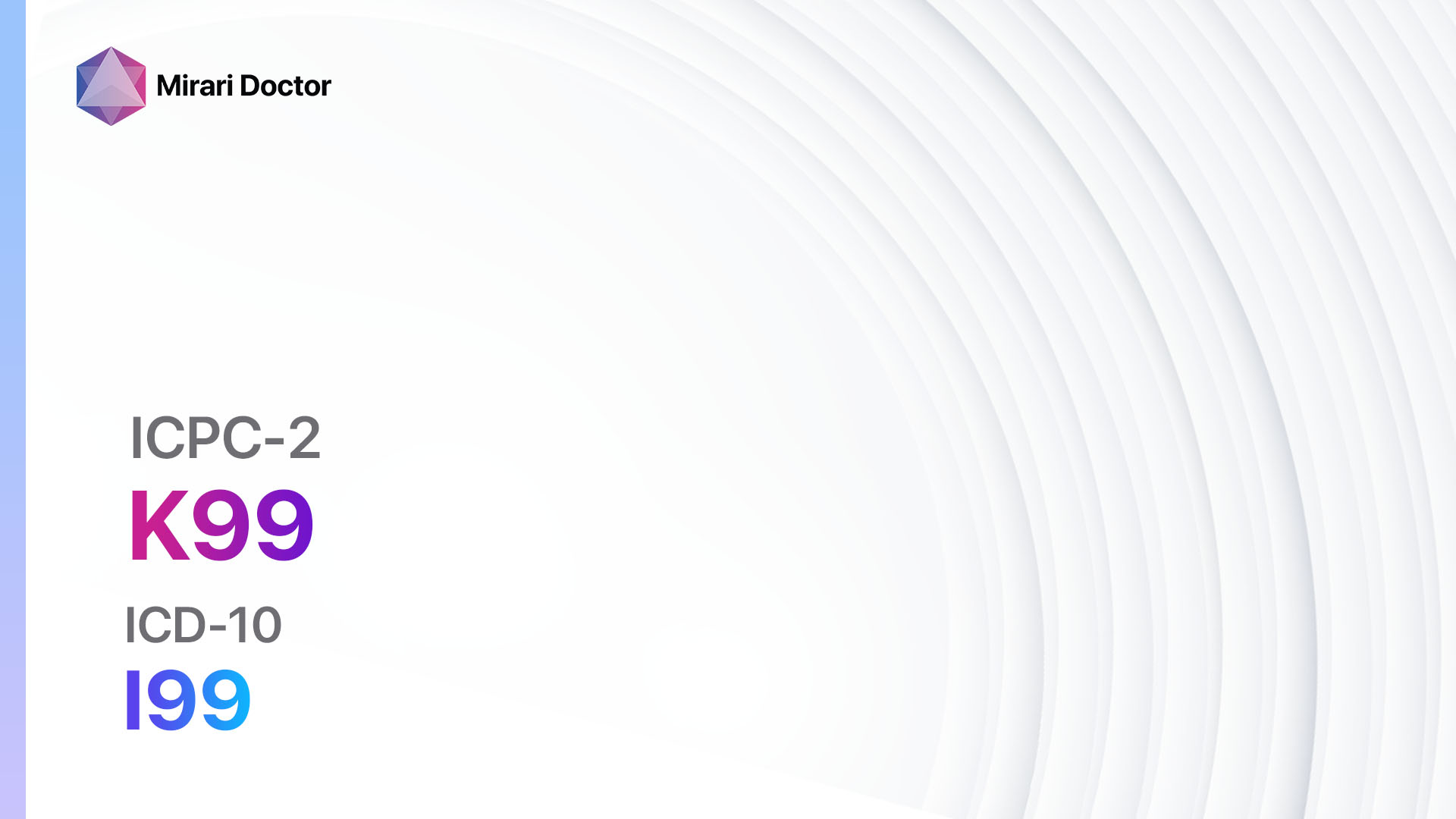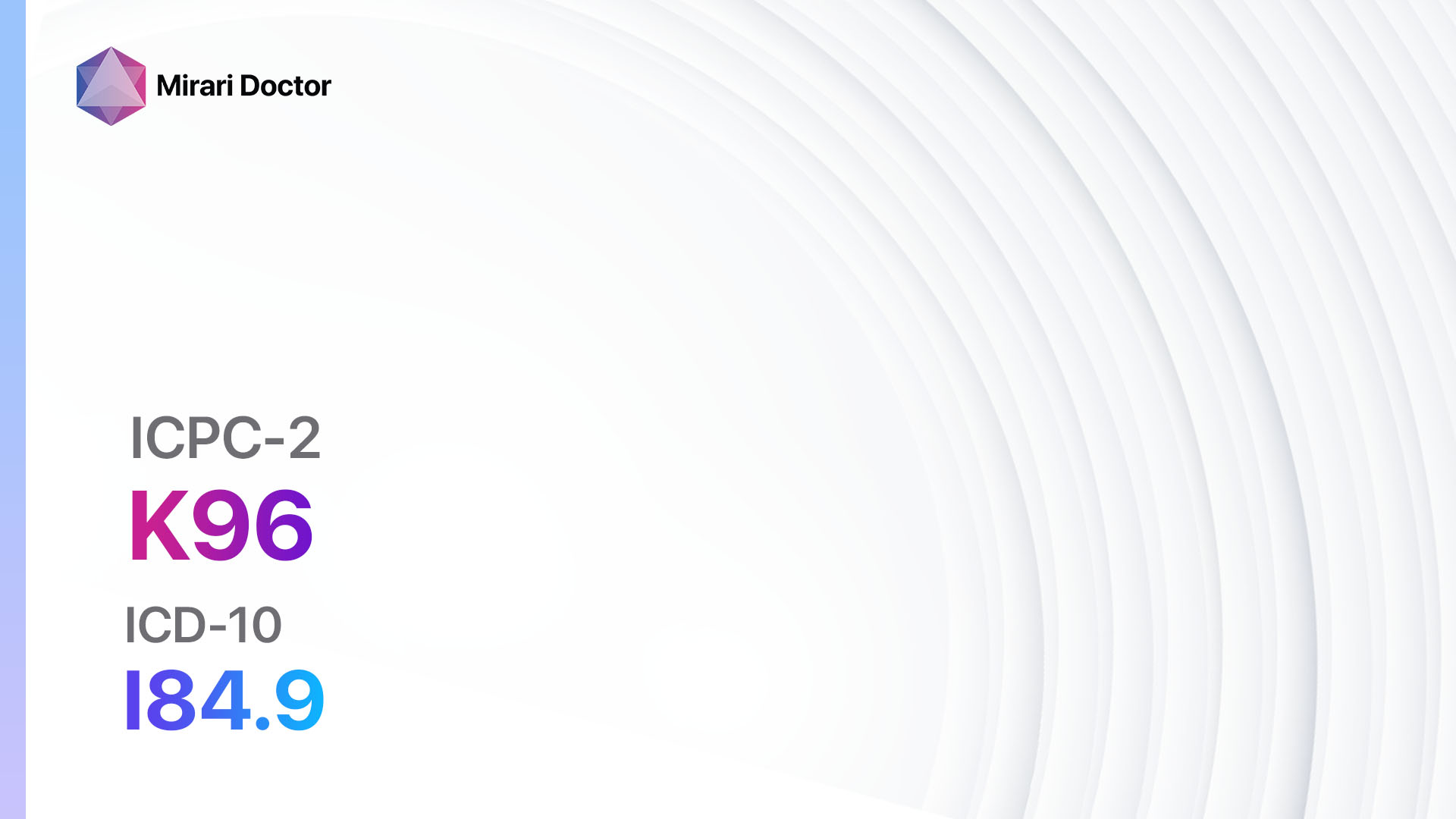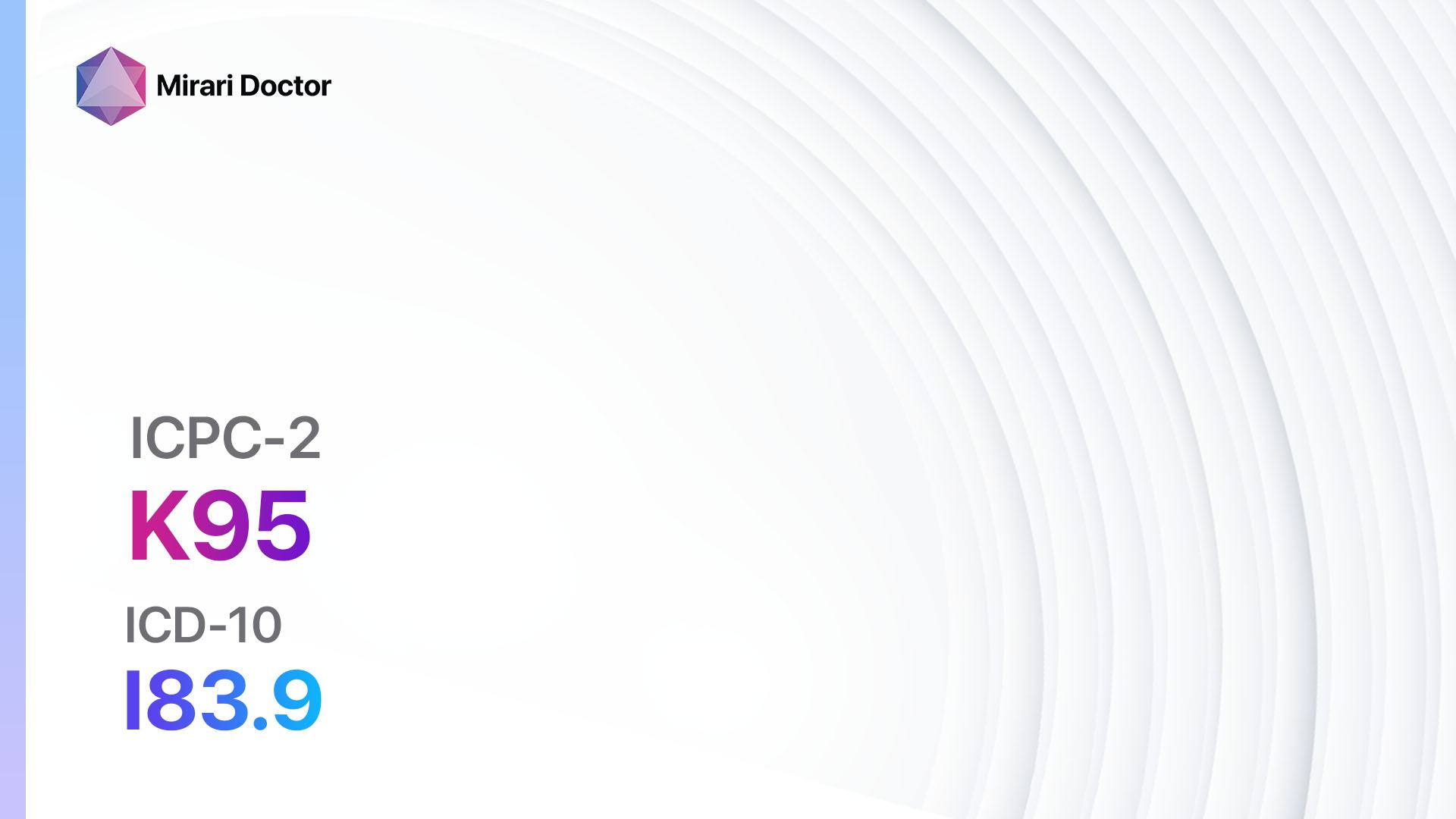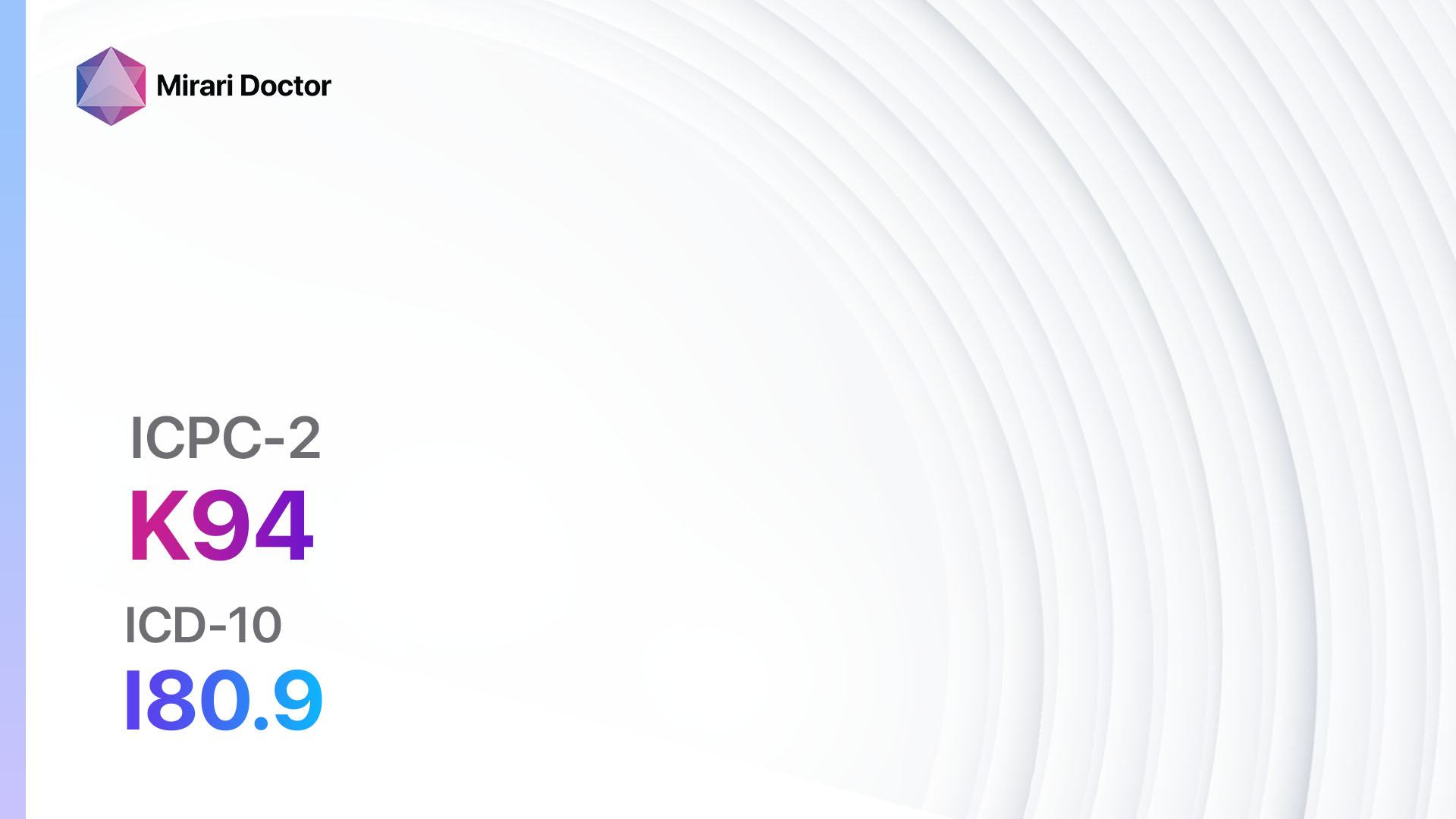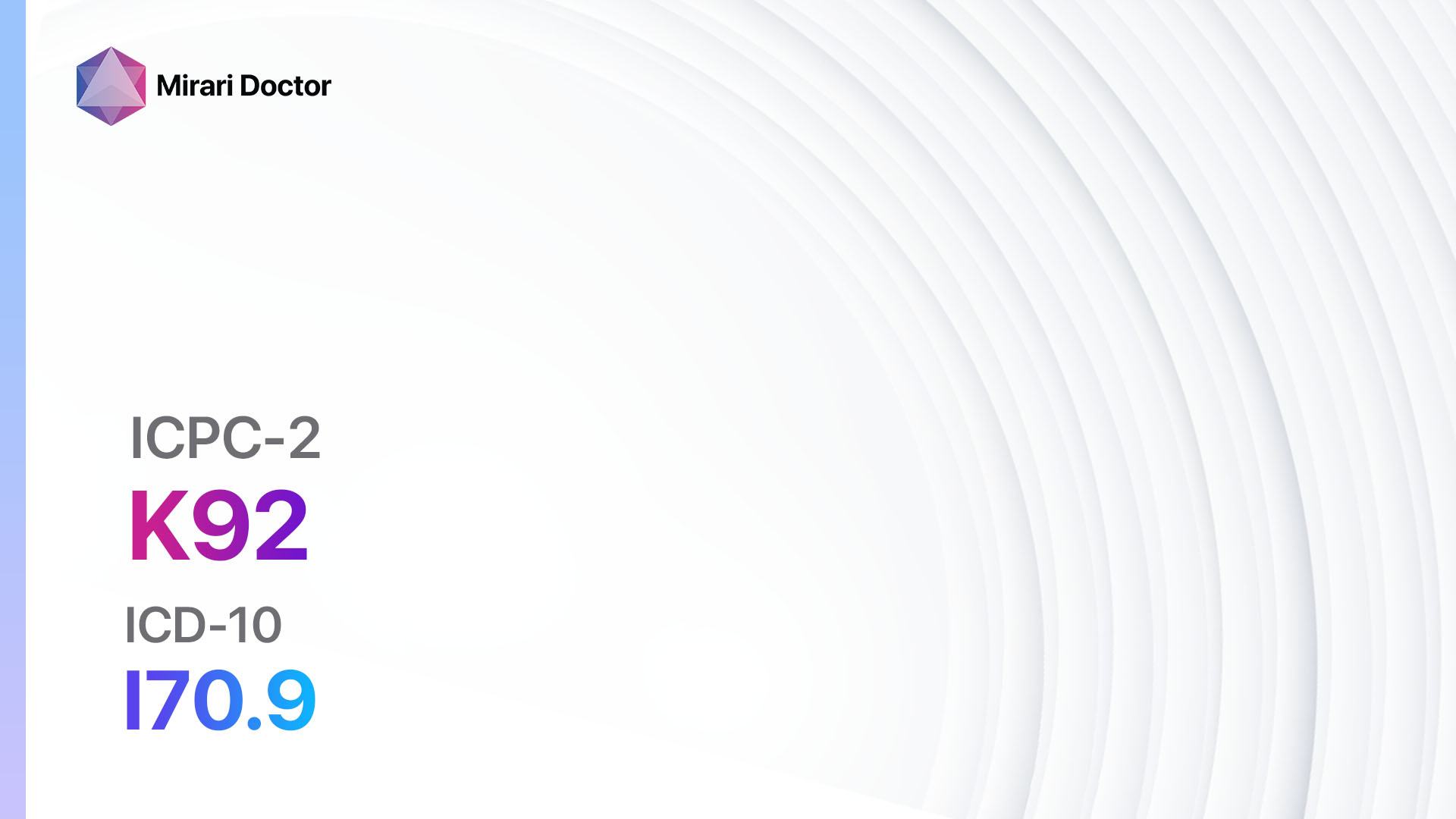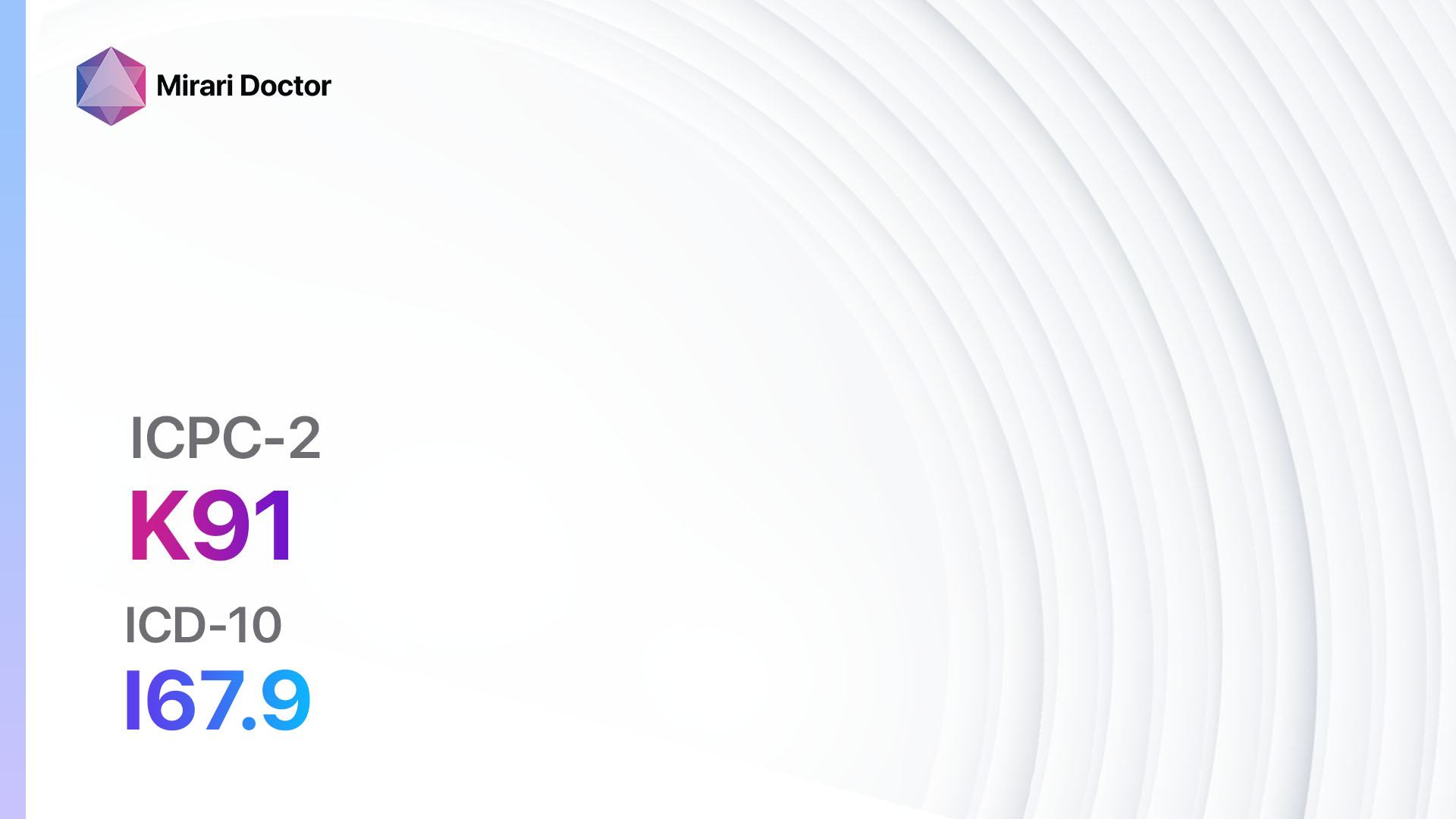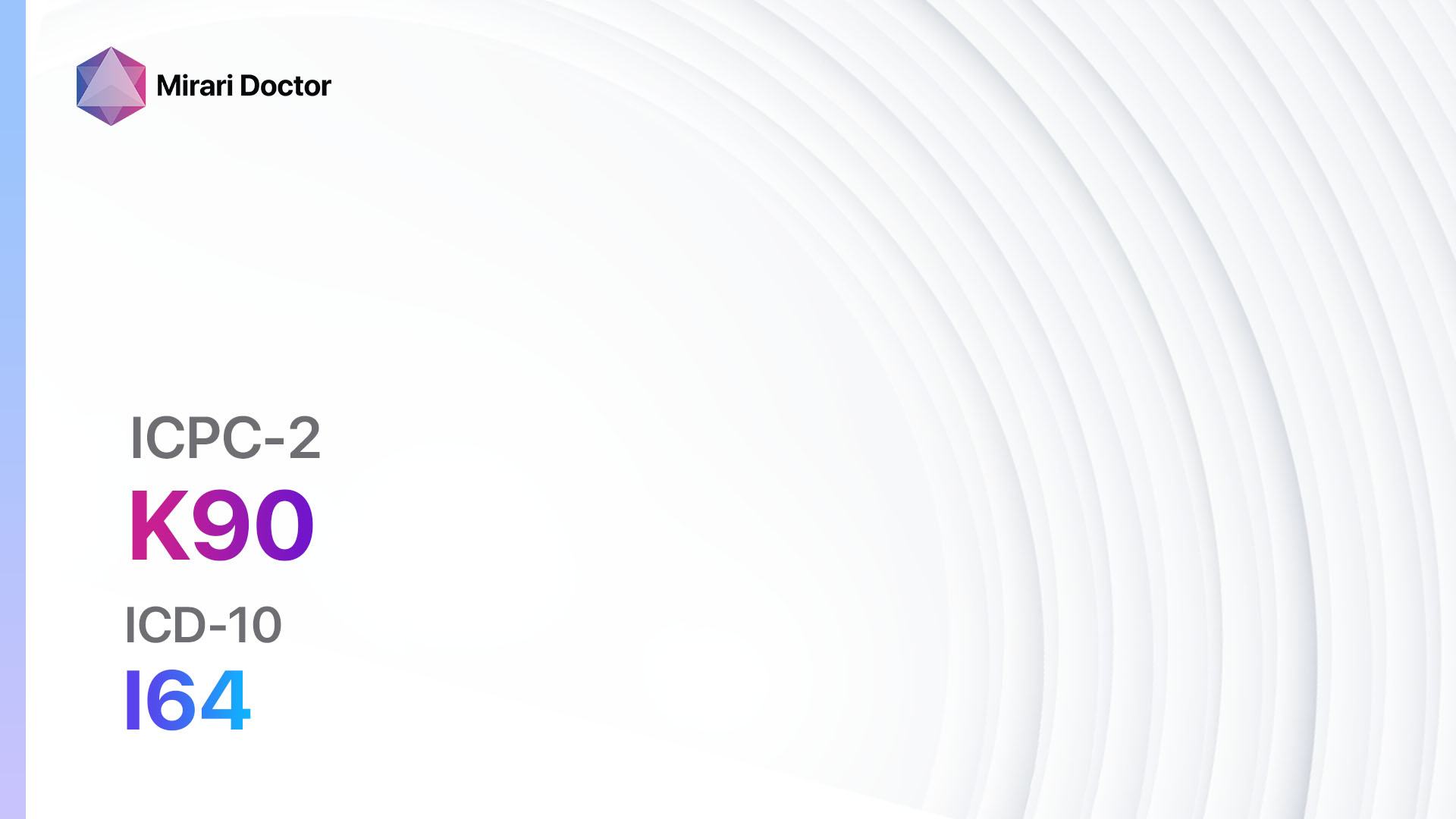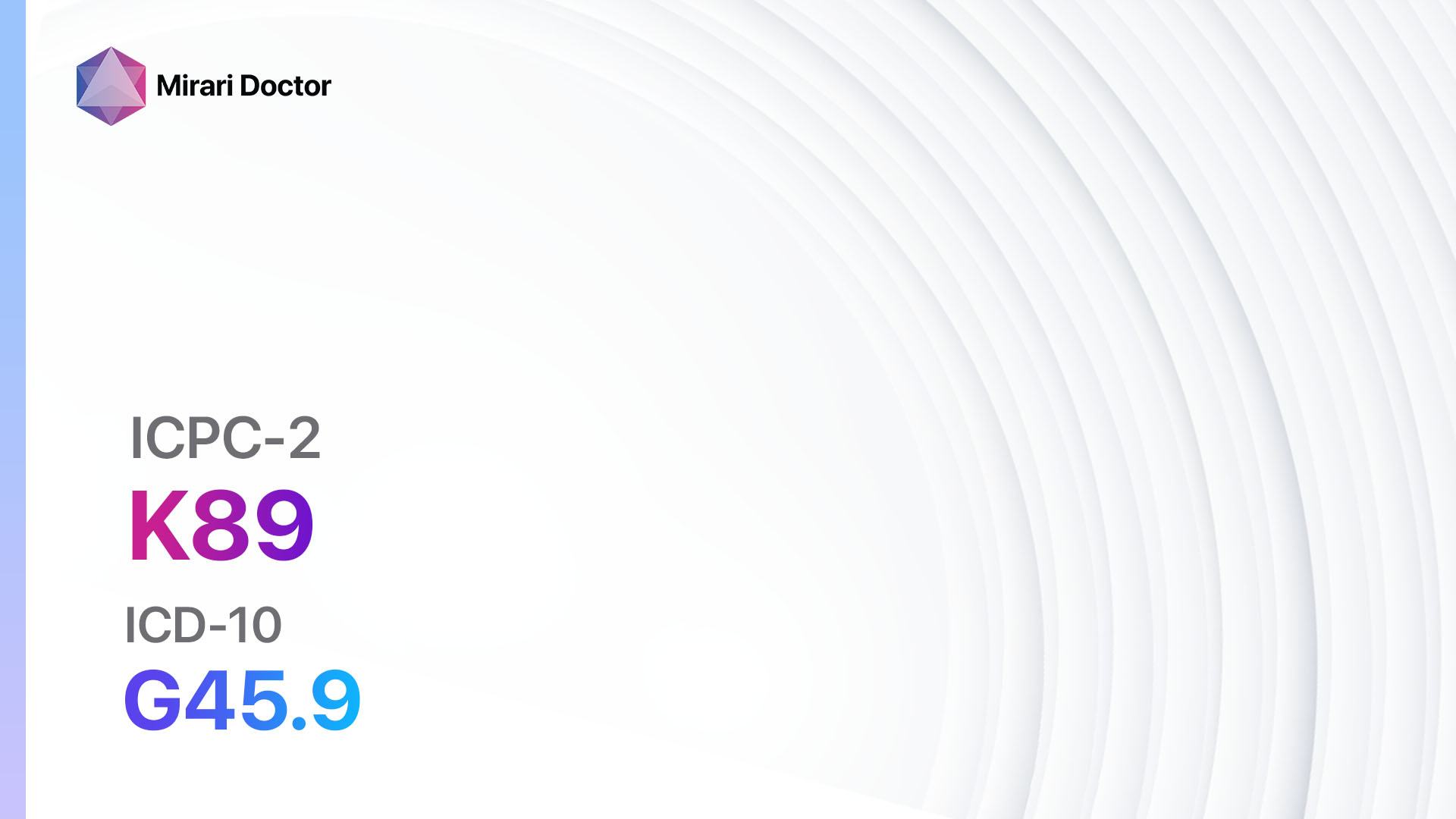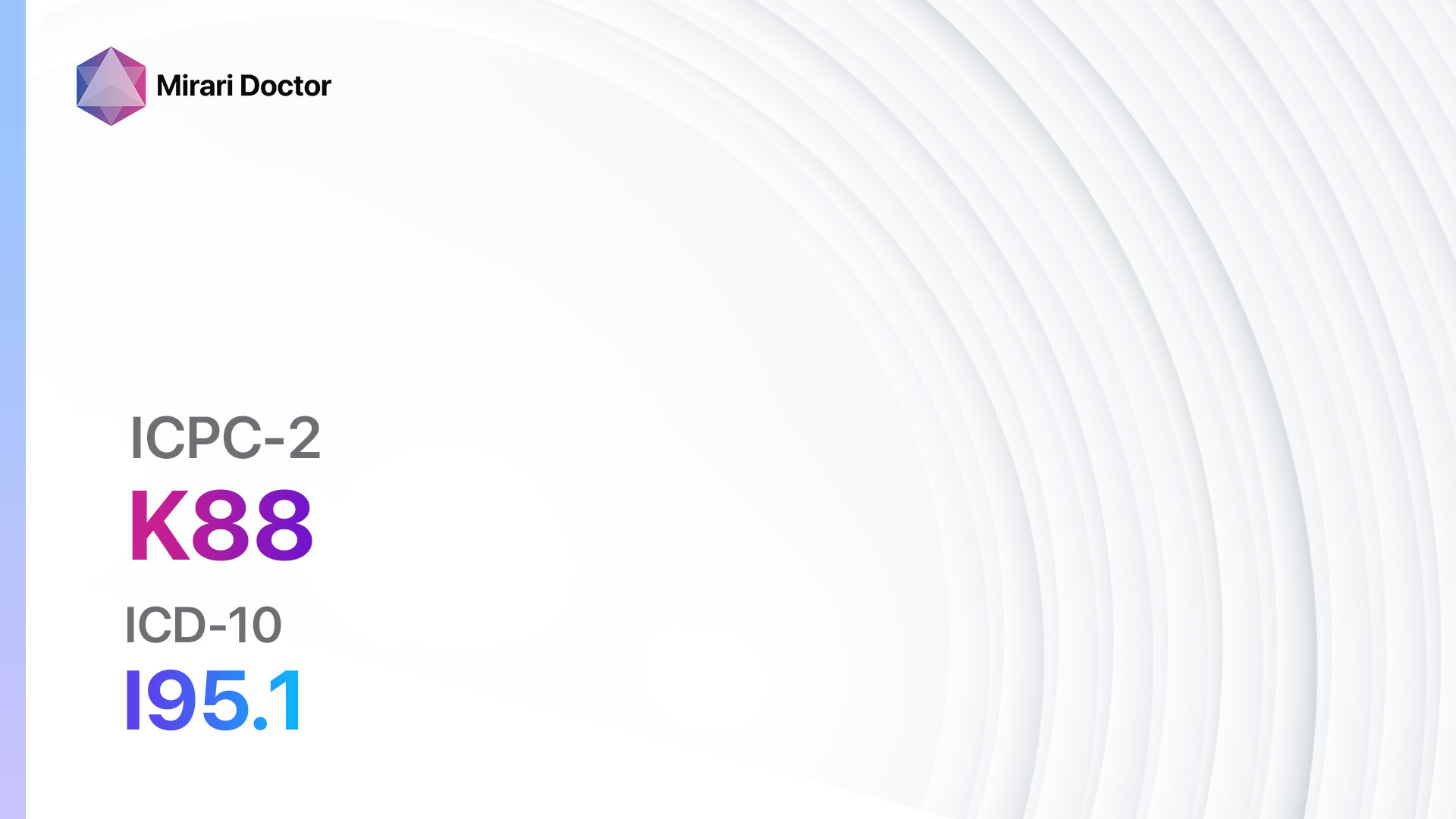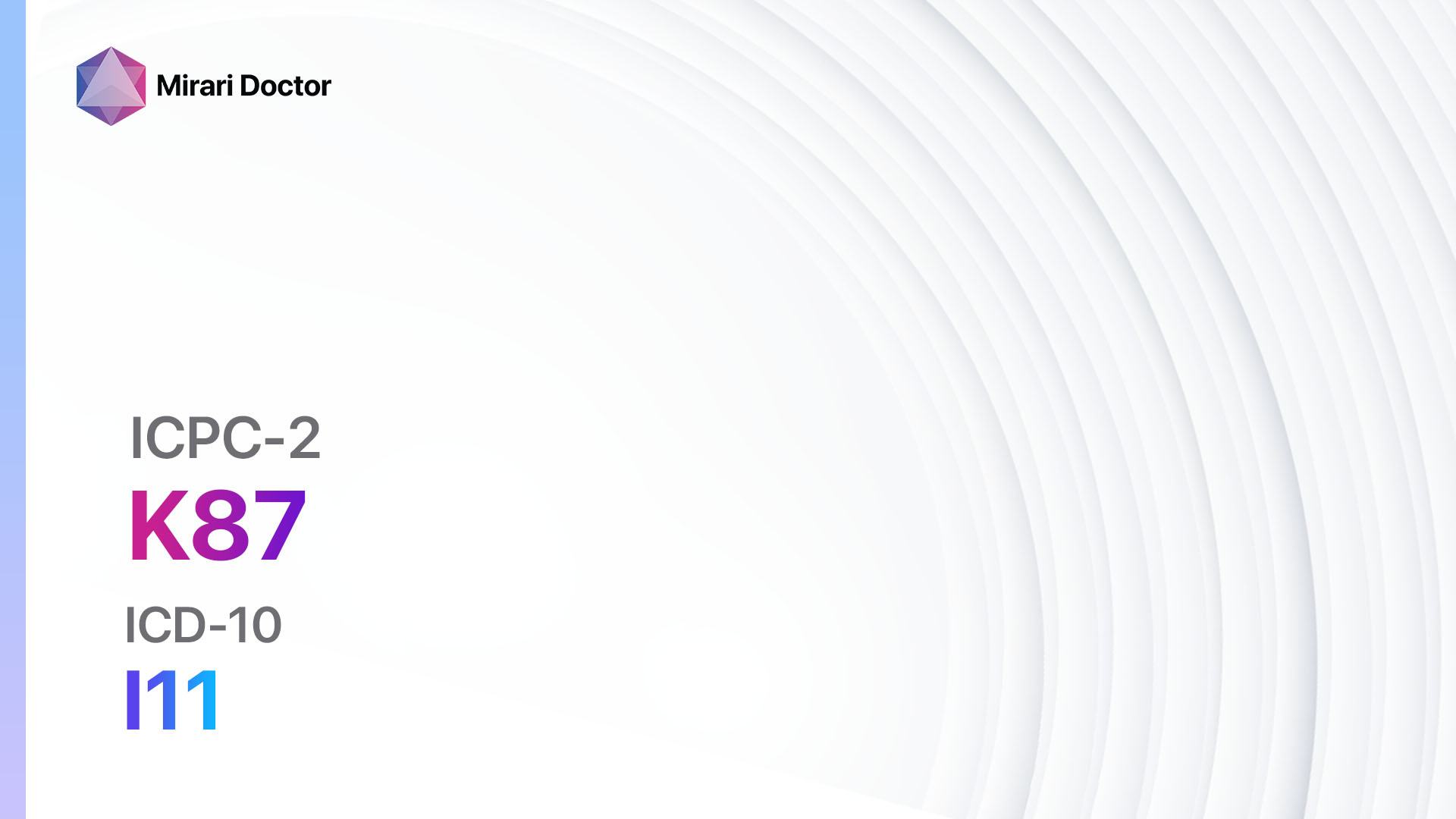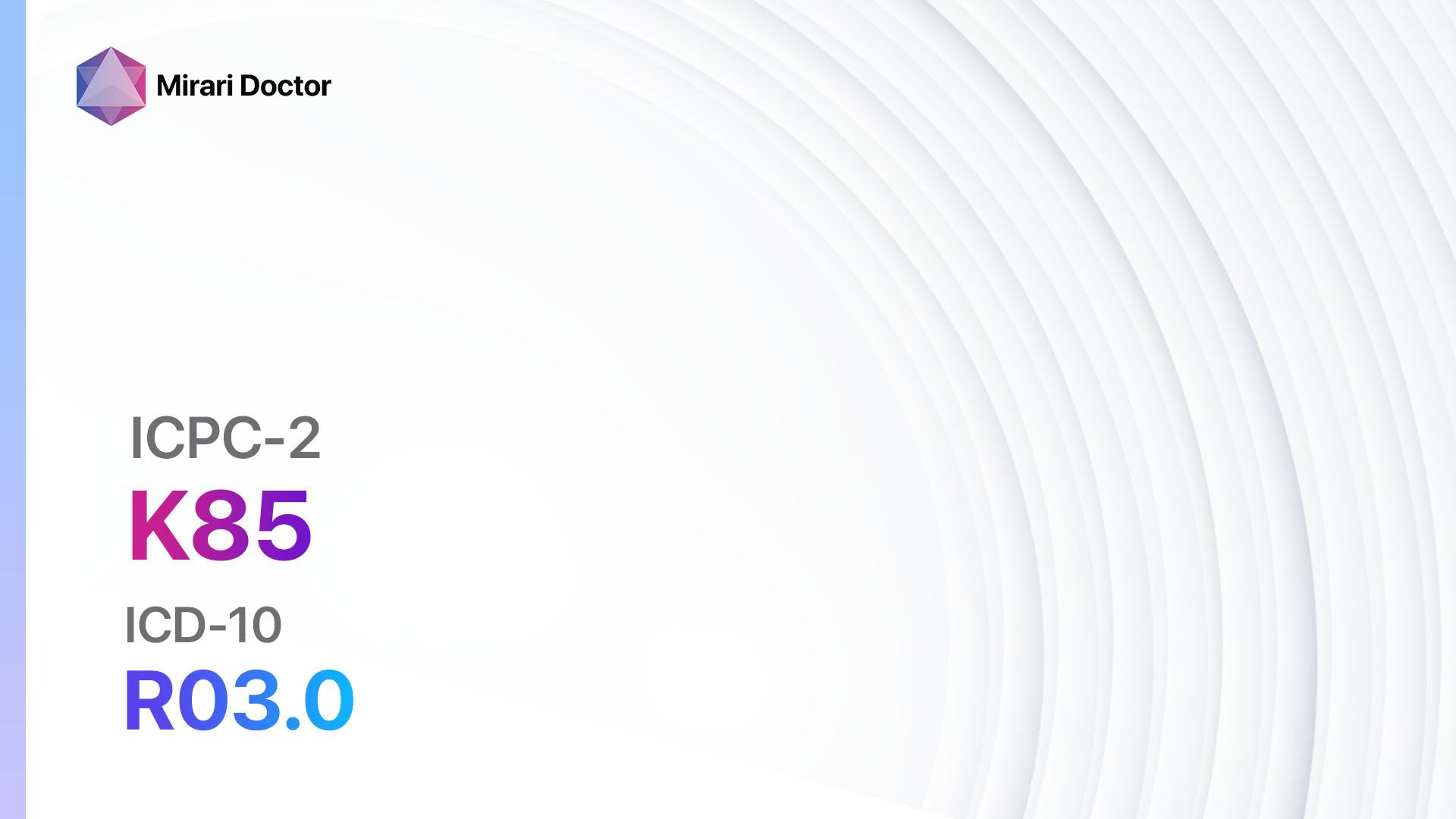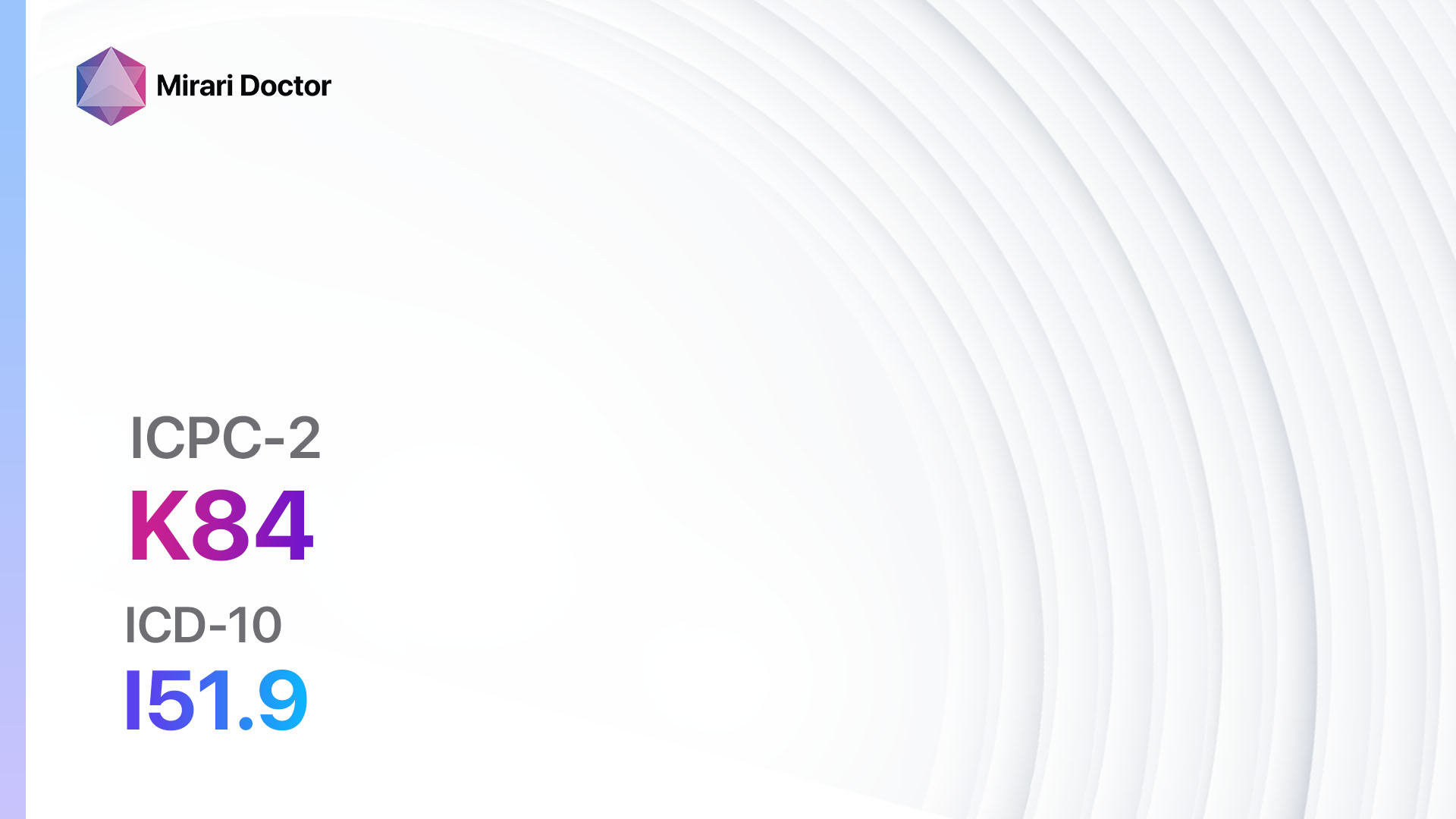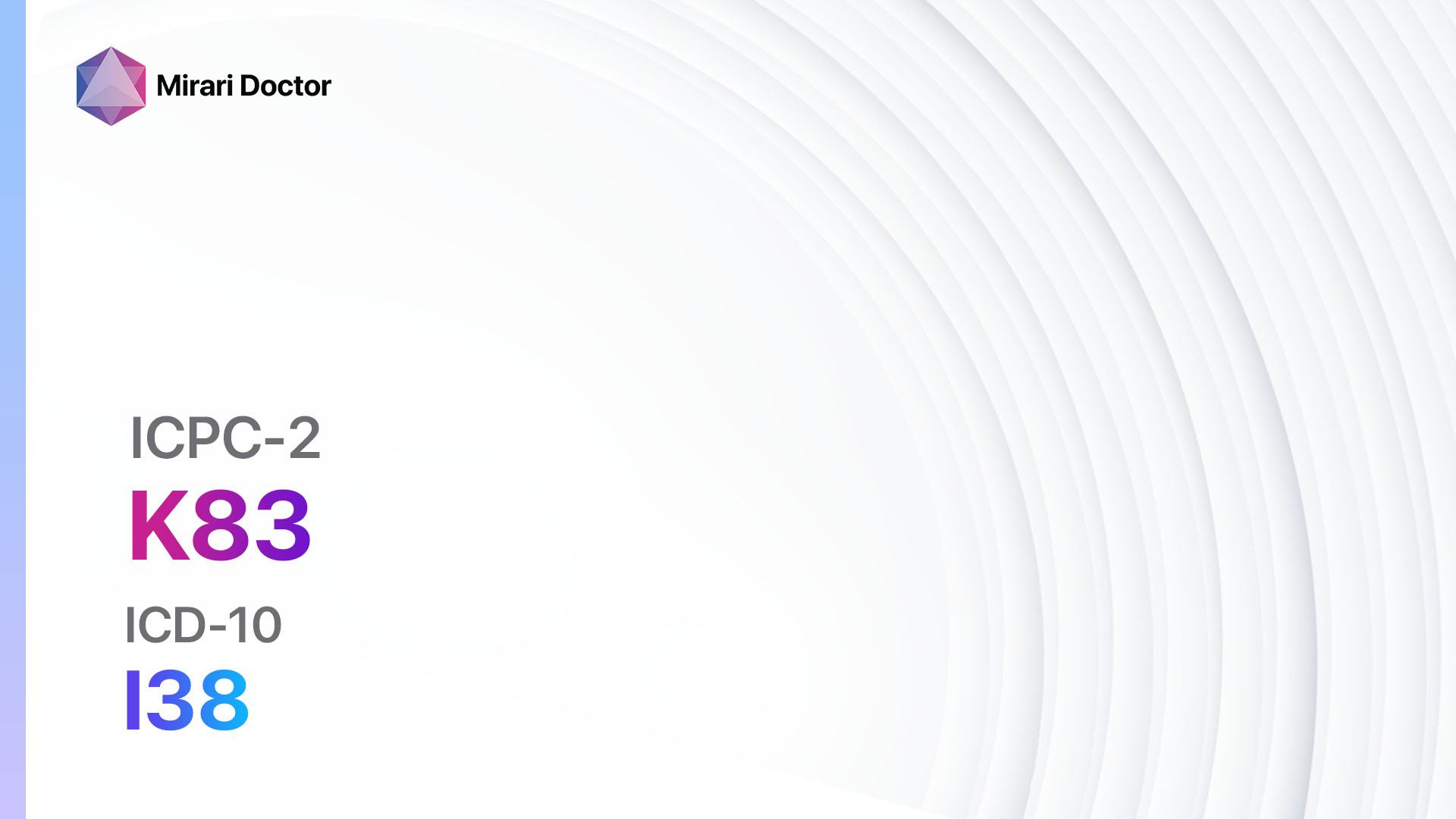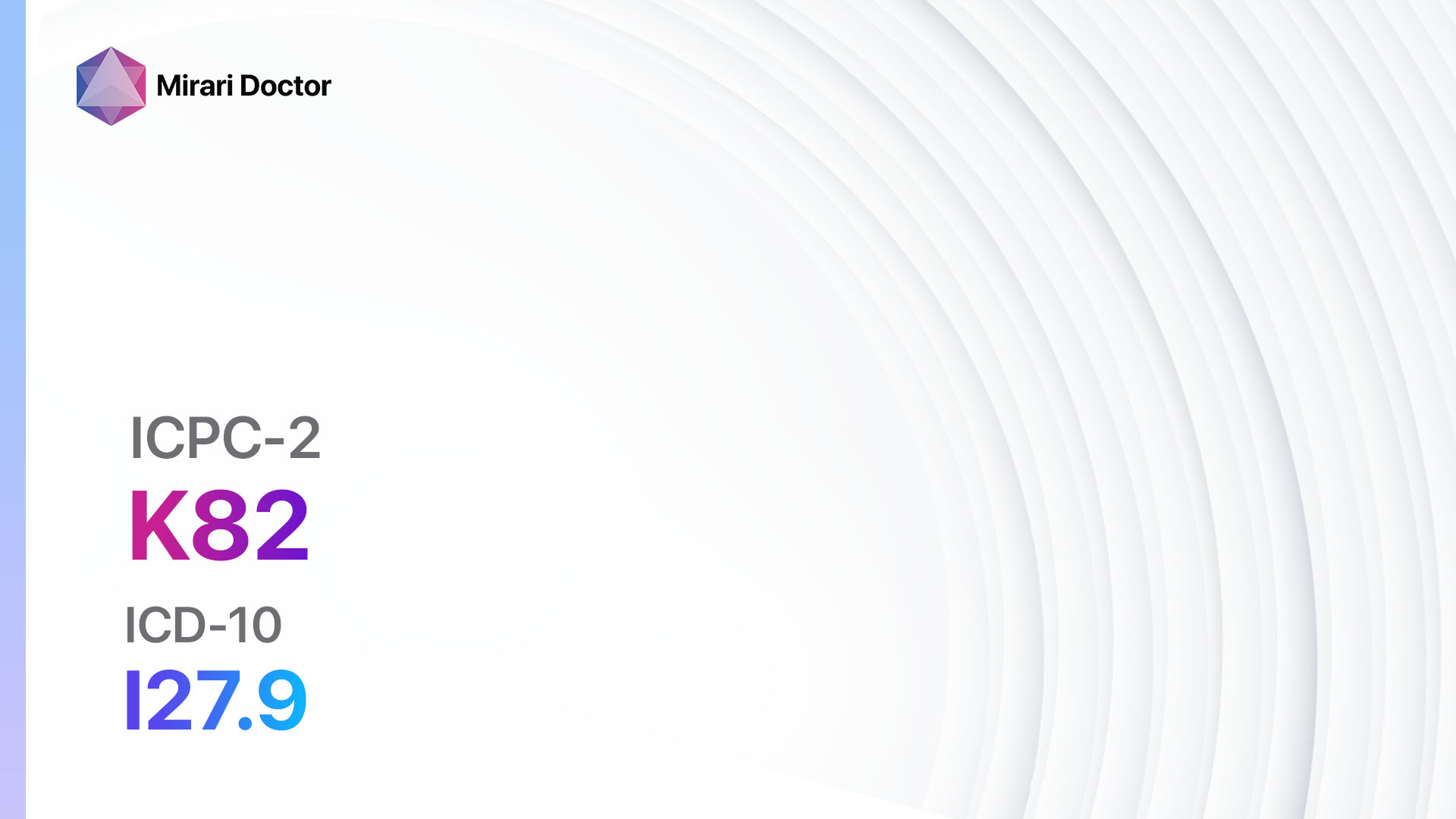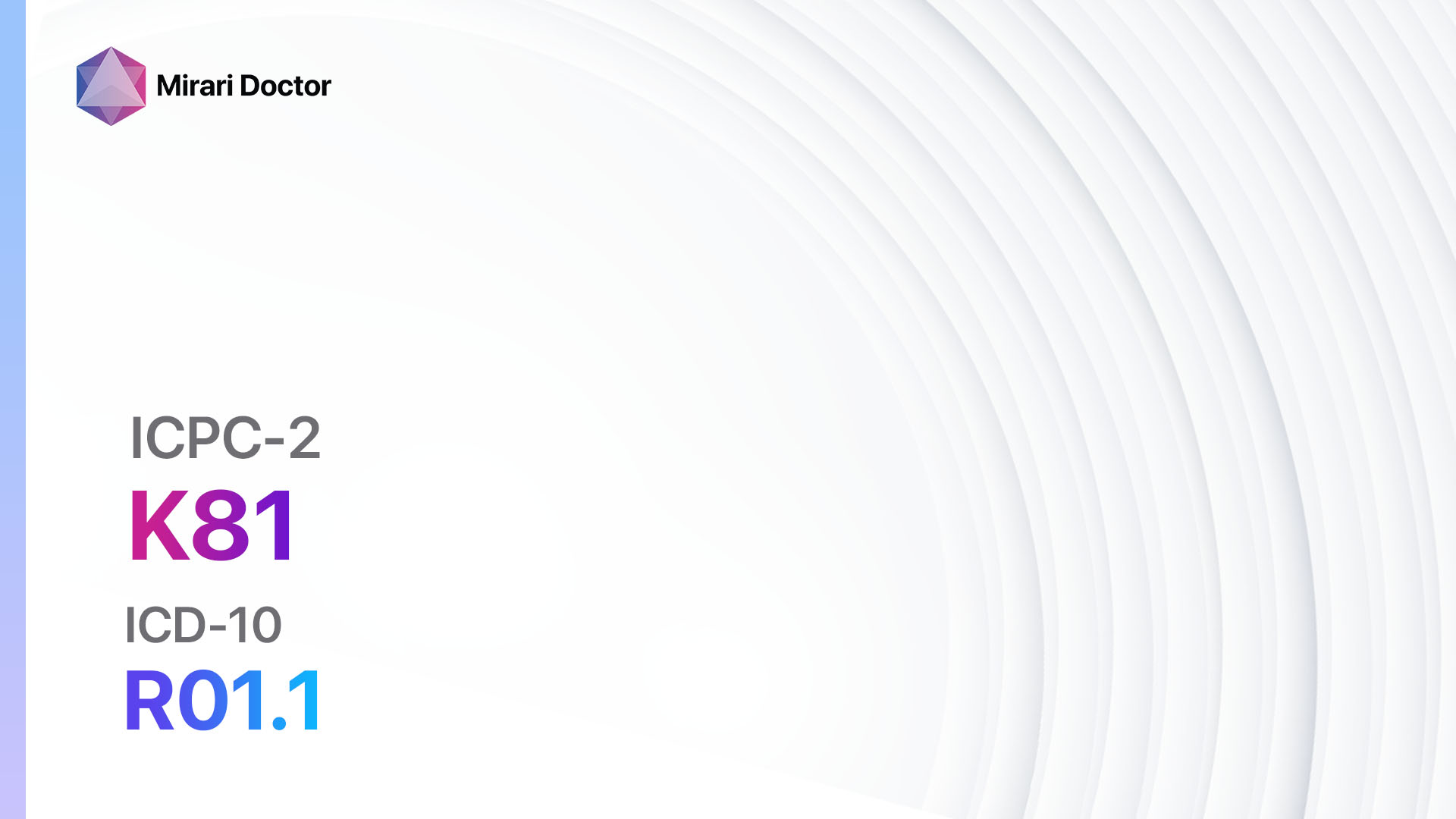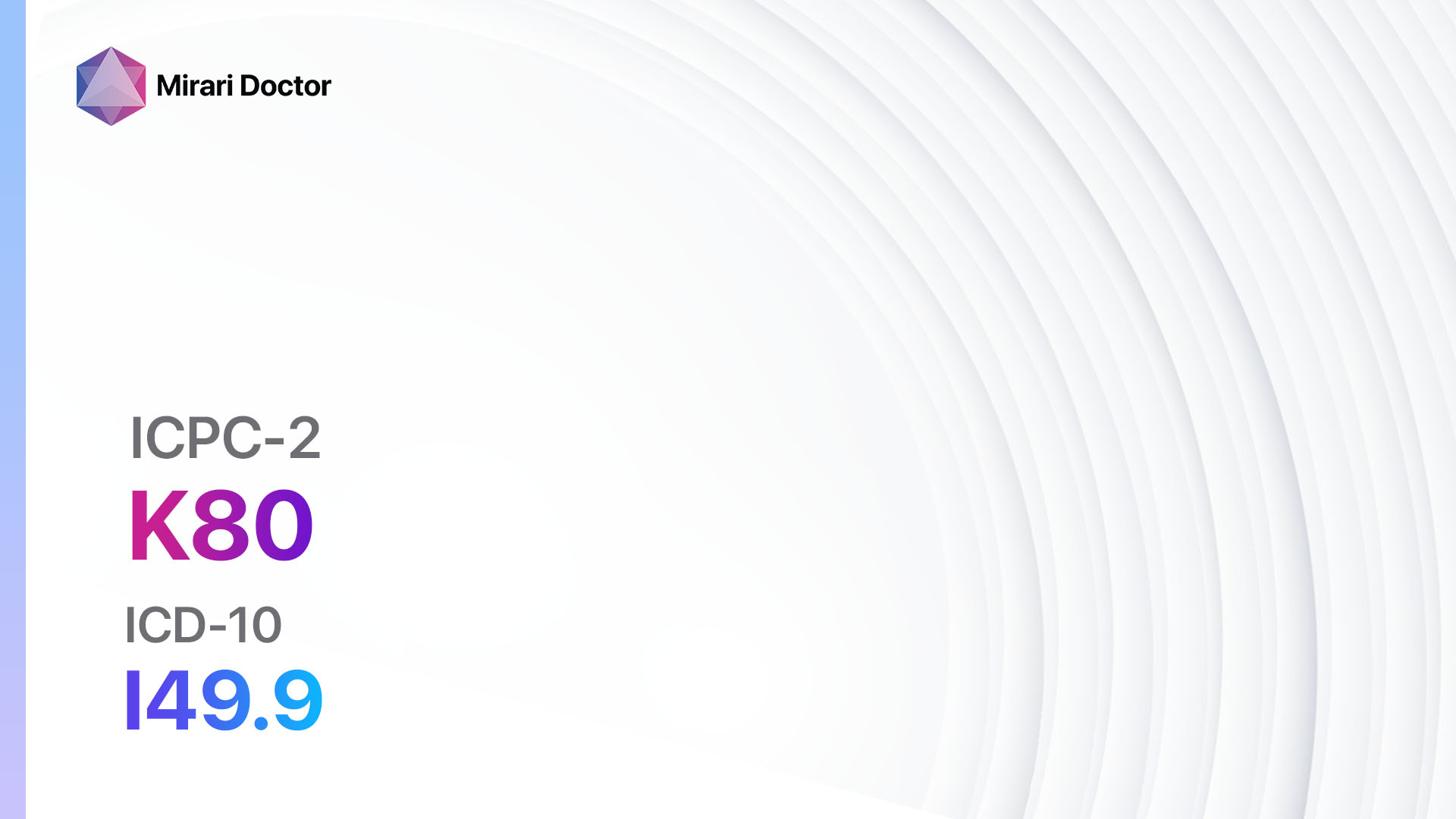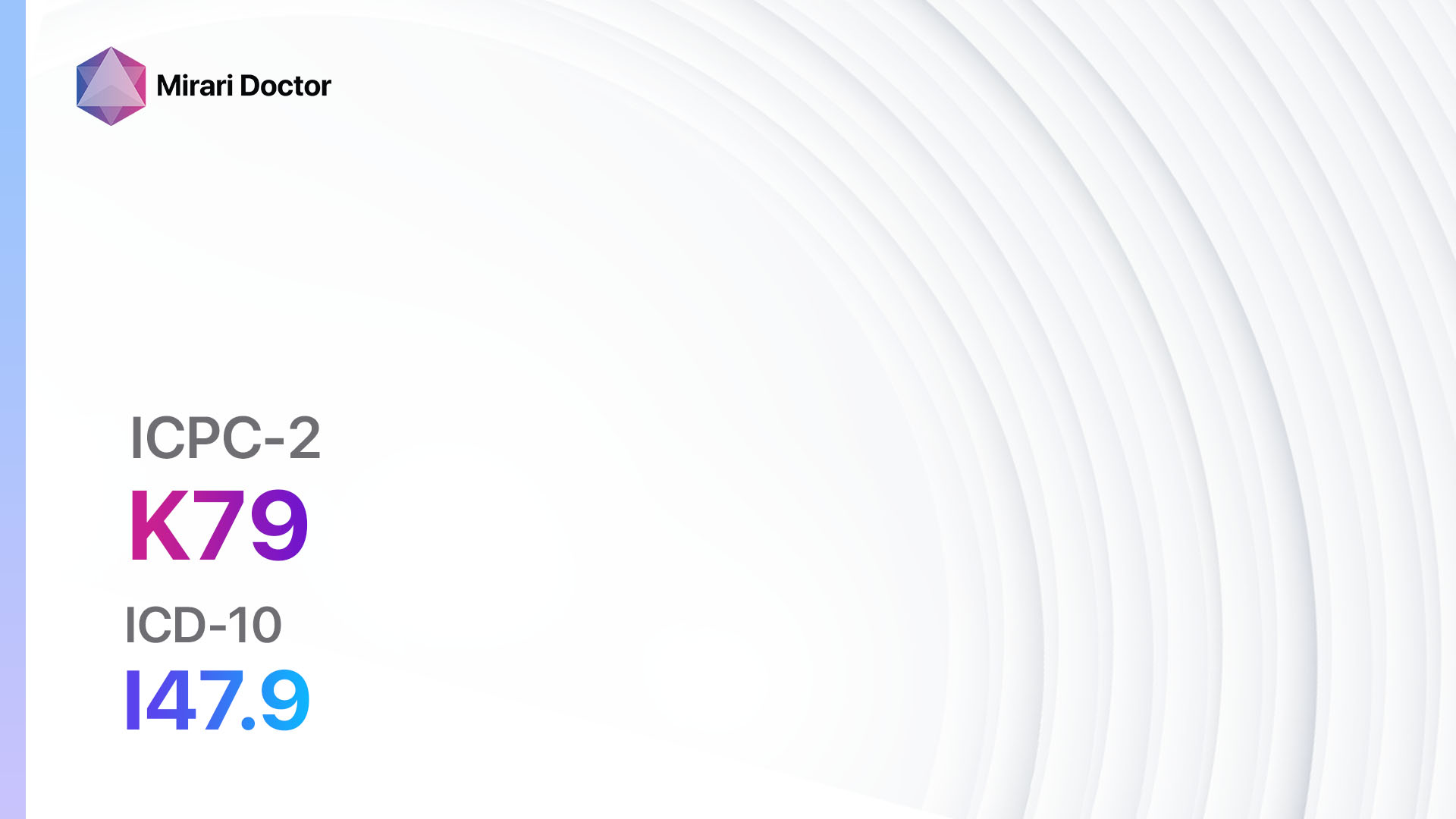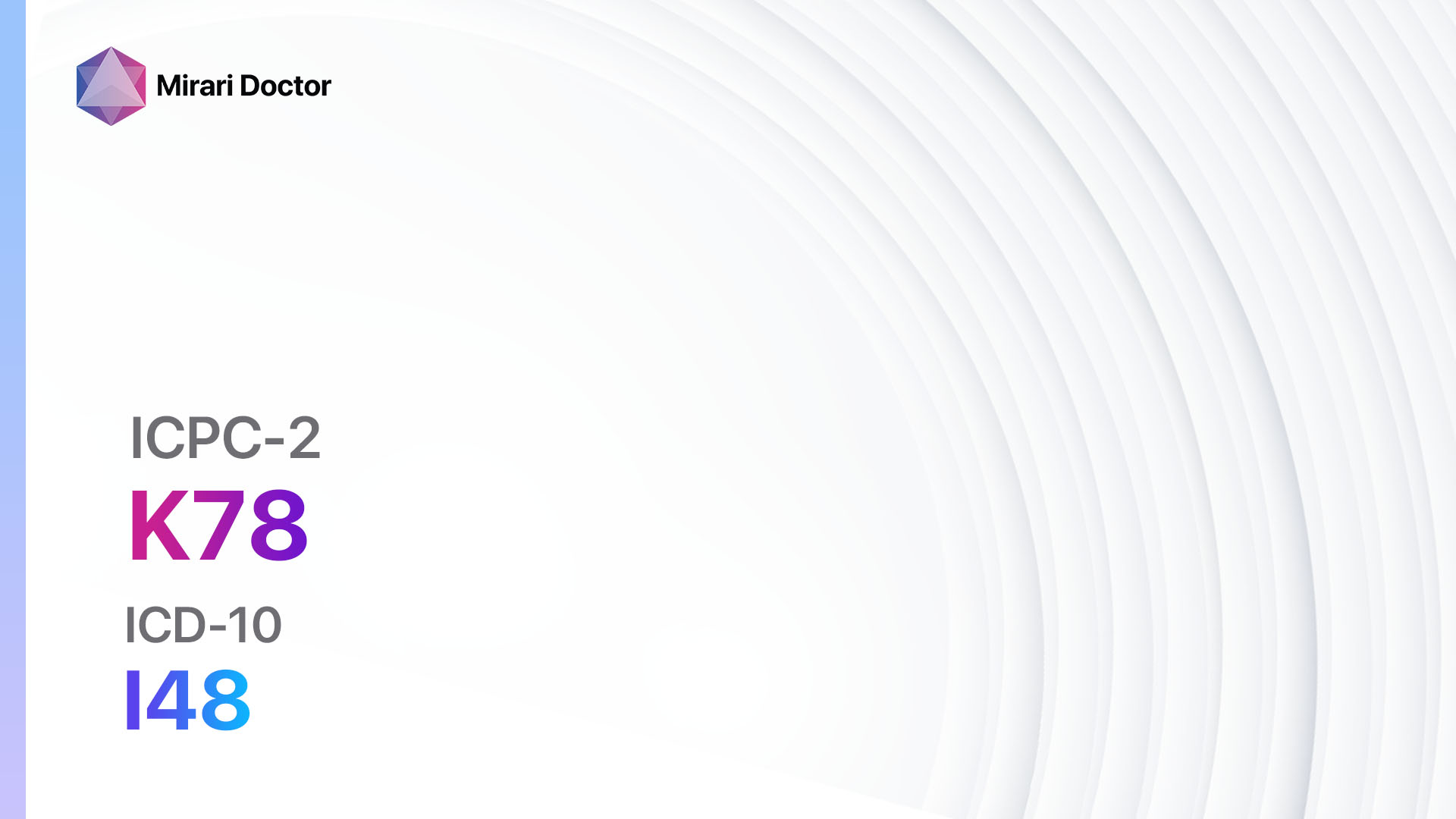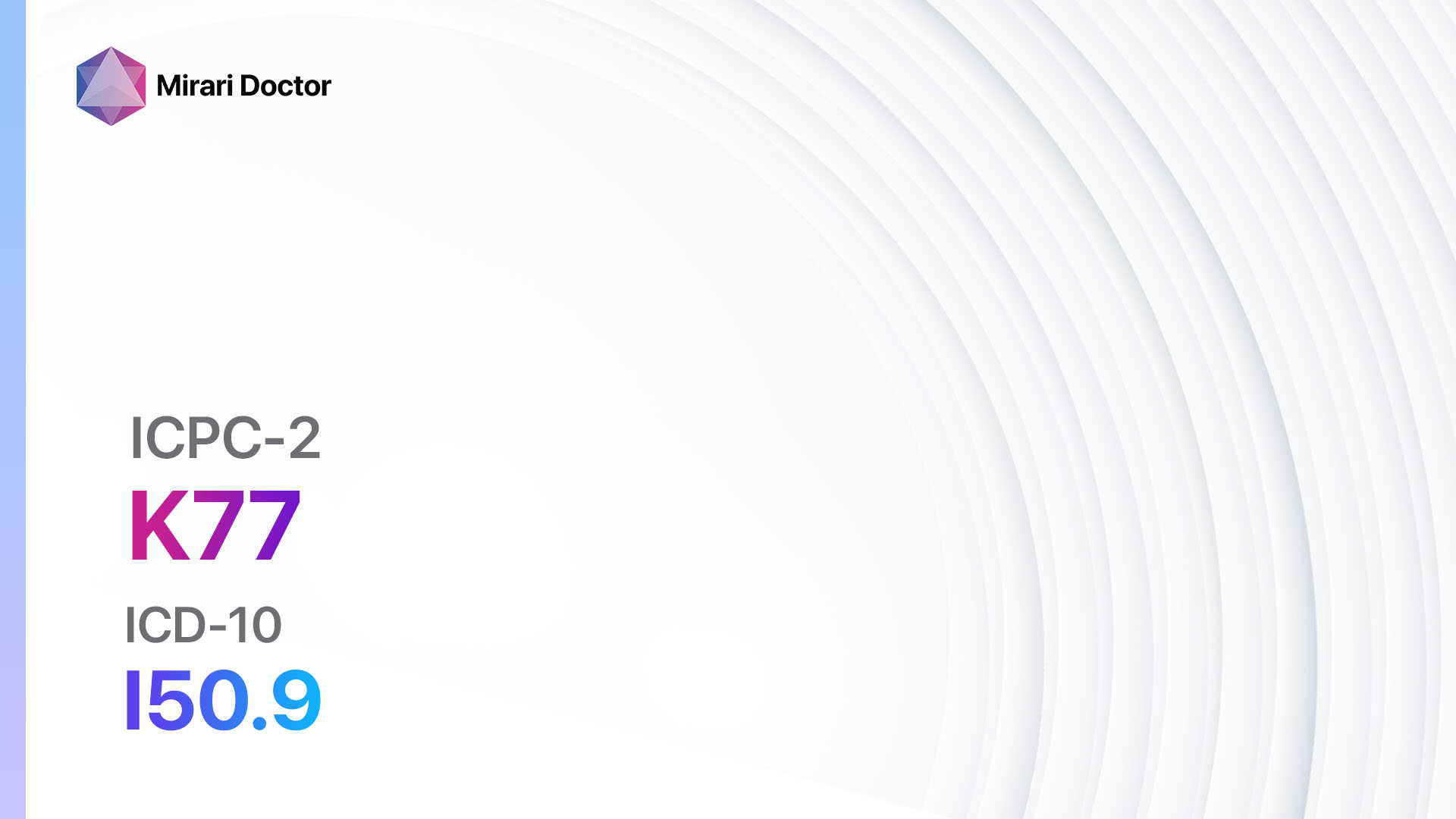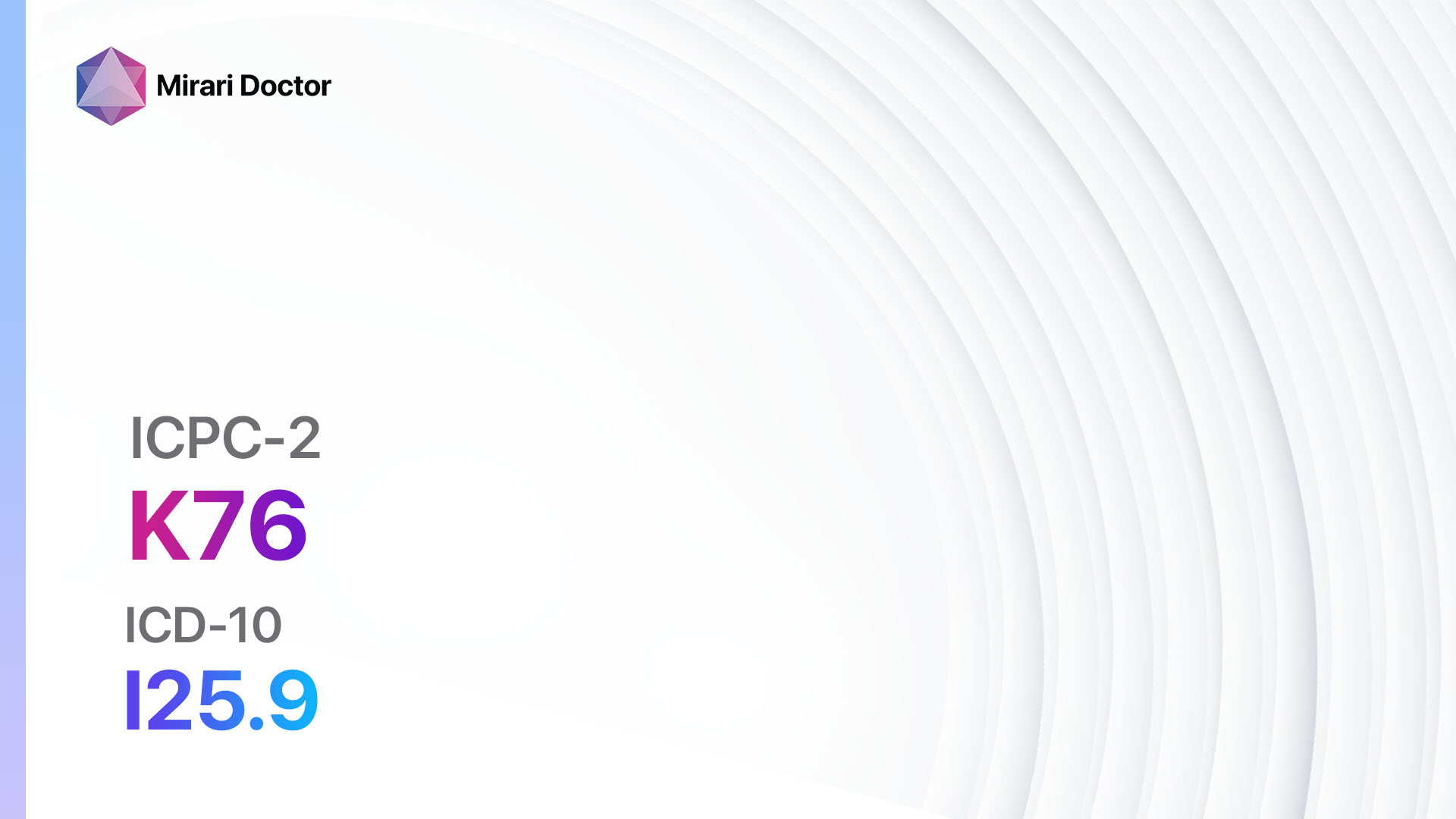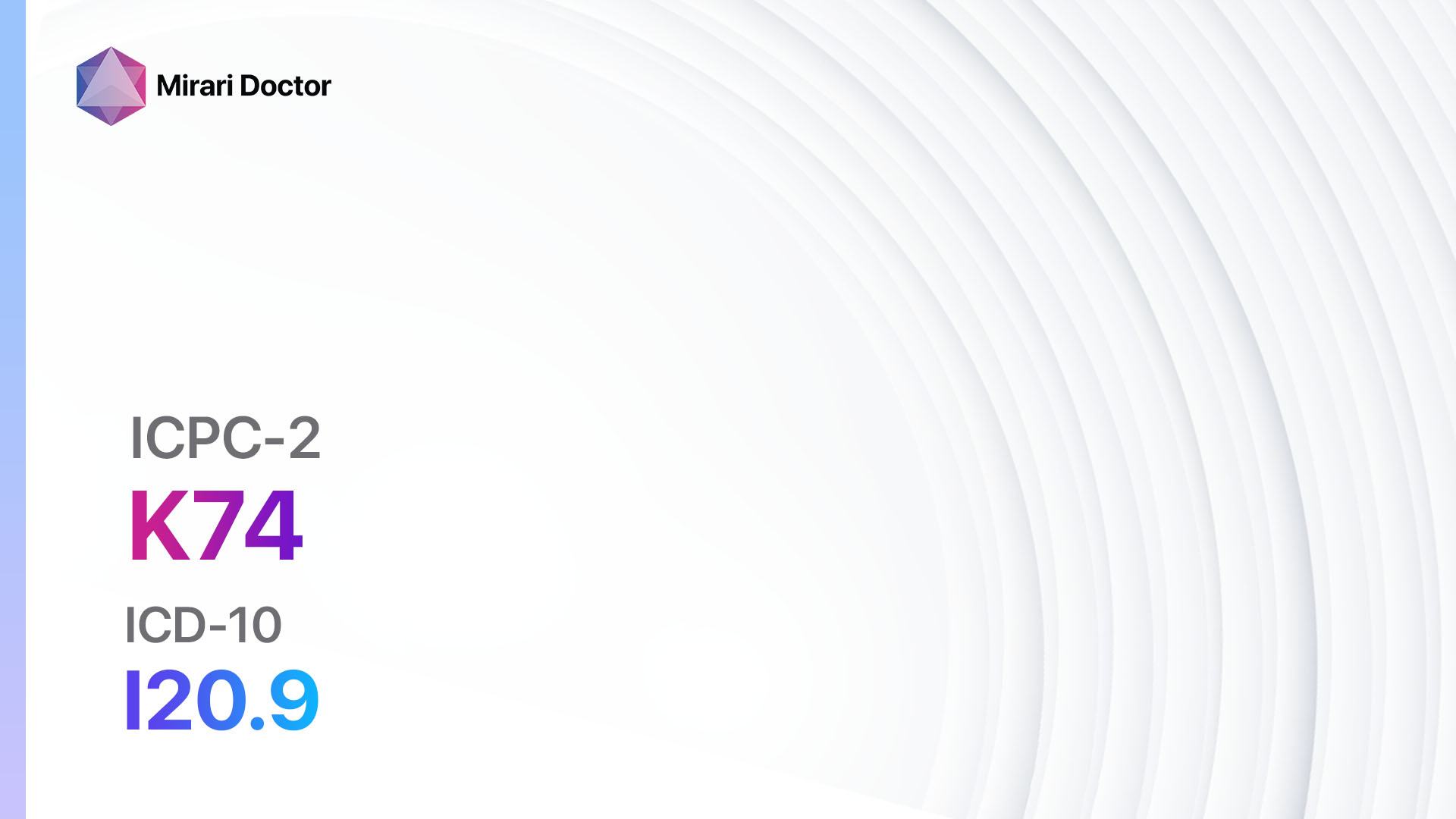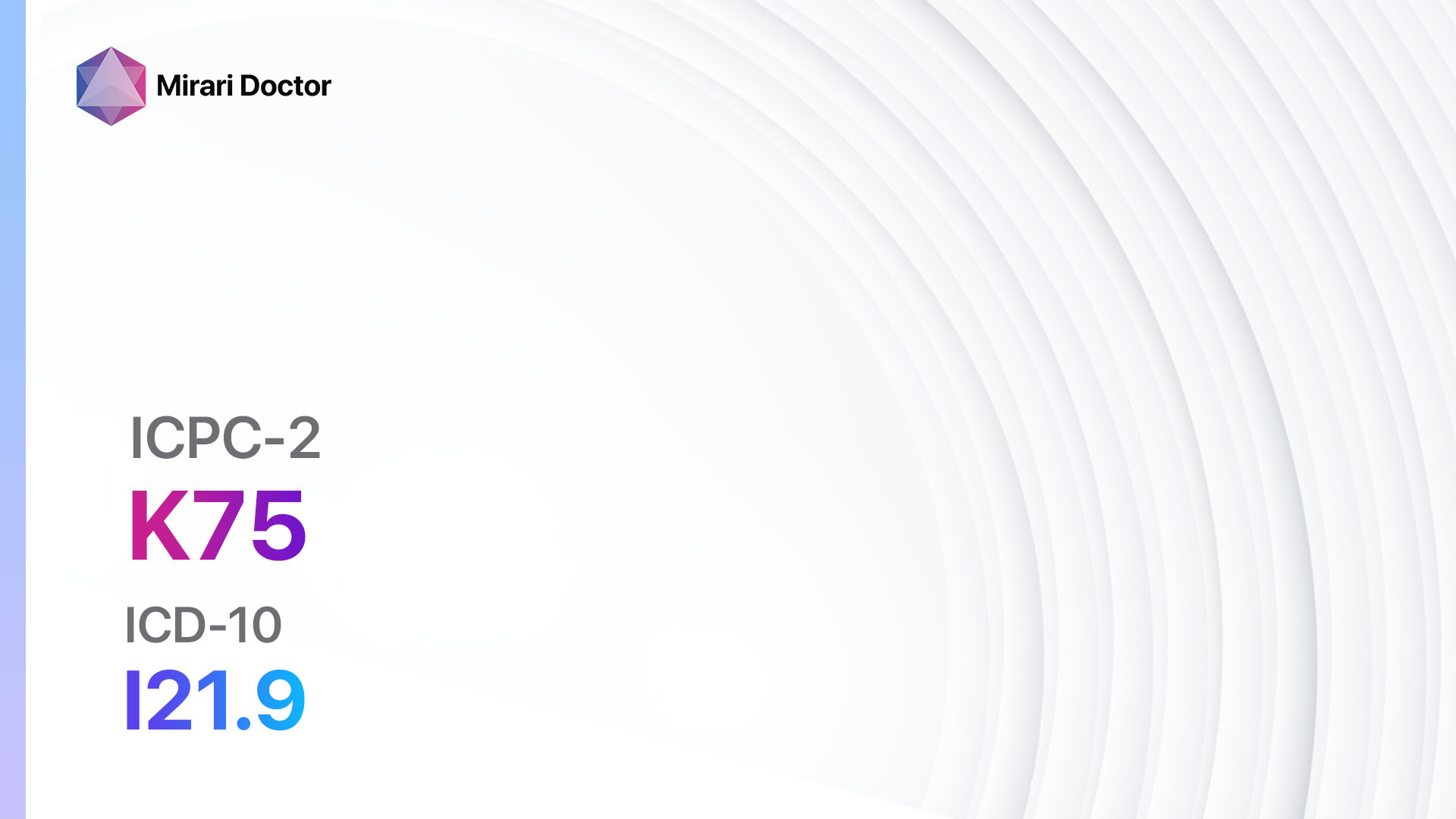
Introduction
Acute myocardial infarction, commonly known as a heart attack, is a serious medical condition that occurs when blood flow to the heart muscle is blocked, leading to tissue damage.[1] It is a life-threatening condition that requires immediate medical attention.[2] The aim of this guide is to provide a comprehensive overview of the symptoms, causes, diagnostic steps, possible interventions, and lifestyle interventions for acute myocardial infarction.
Codes
- ICPC-2 Code: K75 Acute myocardial infarction[3]
- ICD-10 Code: I21.9 Acute myocardial infarction, unspecified[4]
Symptoms
- Chest pain or discomfort: This is the most common symptom of a heart attack. It may feel like pressure, tightness, or squeezing in the chest. The pain may also radiate to the arms, jaw, neck, back, or stomach.[5]
- Shortness of breath: Difficulty breathing or feeling breathless, even at rest.[6]
- Nausea, vomiting, or indigestion: Some people may experience these symptoms during a heart attack.[7]
- Sweating: Profuse sweating, often accompanied by cold, clammy skin.[8]
- Fatigue: Feeling unusually tired or weak.[9]
- Dizziness or lightheadedness: Feeling faint or dizzy.[10]
Causes
- Coronary artery disease: The most common cause of a heart attack is the buildup of plaque in the coronary arteries, which supply blood to the heart muscle. This can lead to the formation of blood clots that block the arteries.
- Spasm of the coronary arteries: In some cases, the coronary arteries may go into spasm, causing a sudden decrease in blood flow to the heart muscle.
- Coronary artery dissection: This is a rare condition where a tear occurs in the coronary artery, leading to a blockage of blood flow.
Diagnostic Steps
Medical History
- Gather information about the patient’s risk factors, such as smoking, high blood pressure, high cholesterol, diabetes, obesity, and family history of heart disease.
- Inquire about the patient’s medical conditions, such as previous heart attacks, angina, or heart failure.
- Ask about the symptoms experienced by the patient, including the duration, intensity, and frequency.
Physical Examination
- Measure the patient’s blood pressure, heart rate, and respiratory rate.
- Listen to the patient’s heart and lungs for any abnormal sounds.
- Check for signs of heart failure, such as fluid retention or swelling in the legs.
Laboratory Tests
- Troponin levels: Elevated levels of troponin, a protein released into the bloodstream during a heart attack, can confirm the diagnosis.
- Complete blood count (CBC): This test can help identify anemia or infection.
- Lipid profile: Assessing the levels of cholesterol and triglycerides can provide information about the patient’s cardiovascular health.
- Blood glucose levels: High blood sugar levels may indicate diabetes, which is a risk factor for heart disease.
Diagnostic Imaging
- Electrocardiogram (ECG): This test records the electrical activity of the heart and can help identify abnormalities, such as ST-segment elevation, which is indicative of a heart attack.
- Echocardiogram: This ultrasound test uses sound waves to create images of the heart and can assess the pumping function and structure of the heart.
- Coronary angiography: This invasive procedure involves injecting a contrast dye into the coronary arteries to visualize any blockages or narrowing.
Other Tests
- Stress test: This test measures the heart’s response to physical exertion and can help identify areas of reduced blood flow to the heart.
- Cardiac catheterization: This procedure involves inserting a catheter into the heart to measure pressures and obtain further information about the coronary arteries.
Follow-up and Patient Education
- Provide the patient with information about their condition, including the importance of lifestyle modifications and adherence to prescribed medications.
- Schedule regular follow-up appointments to monitor the patient’s progress and adjust treatment as needed.
- Educate the patient about the signs and symptoms of a heart attack and the importance of seeking immediate medical attention.
Possible Interventions
Traditional Interventions
Medications:
Top 5 drugs for Acute Myocardial Infarction:
- Aspirin:
- Cost: $3-$10/month.
- Contraindications: Active bleeding, allergy to aspirin.
- Side effects: Upset stomach, increased risk of bleeding.
- Severe side effects: Severe bleeding, allergic reactions.
- Drug interactions: Other blood thinners, NSAIDs.
- Warning: Should be taken as directed by a healthcare professional.
- Nitroglycerin:
- Cost: $10-$30/month.
- Contraindications: Use of erectile dysfunction medications, severe anemia.
- Side effects: Headache, dizziness.
- Severe side effects: Severe drop in blood pressure.
- Drug interactions: Erectile dysfunction medications, other vasodilators.
- Warning: Should be stored in a cool, dark place.
- Beta-blockers (e.g., Metoprolol, Atenolol):
- Cost: Generic versions are typically <$30/month.
- Contraindications: Severe bradycardia, uncontrolled heart failure.
- Side effects: Fatigue, dizziness, bradycardia.
- Severe side effects: Bronchospasm, heart block.
- Drug interactions: Calcium channel blockers, insulin.
- Warning: Should not be abruptly stopped.
- ACE inhibitors (e.g., Ramipril, Lisinopril):
- Cost: Generics can be $10-$50/month.
- Contraindications: History of angioedema with ACE inhibitors, renal artery stenosis.
- Side effects: Cough, elevated blood urea nitrogen.
- Severe side effects: Angioedema, hyperkalemia.
- Drug interactions: Potassium supplements, NSAIDs.
- Warning: Monitoring of renal function and potassium is required.
- Statins (e.g., Atorvastatin, Simvastatin, Rosuvastatin):
- Cost: Generic versions can be $3-$50/month.
- Contraindications: Active liver disease, hypersensitivity.
- Side effects: Muscle pain, diarrhea, upset stomach.
- Severe side effects: Rhabdomyolysis, liver damage.
- Drug interactions: Grapefruit juice, other cholesterol-lowering agents.
- Warning: Regular liver function tests required.
Alternative Drugs:
- Clopidogrel: An alternative antiplatelet agent for patients who cannot tolerate aspirin.
- Morphine: Used for pain relief in acute myocardial infarction.
- Heparin: An anticoagulant used to prevent blood clots.
- Fibrinolytic agents: Used to dissolve blood clots in certain cases of acute myocardial infarction.
- Angiotensin receptor blockers (ARBs): An alternative to ACE inhibitors for patients who cannot tolerate them.
Surgical Procedures:
- Percutaneous coronary intervention (PCI): A minimally invasive procedure that involves inserting a catheter with a balloon at the tip to open up blocked or narrowed coronary arteries. Cost: $15,000 to $50,000.
- Coronary artery bypass grafting (CABG): A surgical procedure that involves creating new routes for blood flow to bypass blocked or narrowed coronary arteries. Cost: $70,000 to $200,000.
Alternative Interventions
- Acupuncture: May help improve blood flow and reduce pain. Cost: $60-$120 per session.
- Chelation therapy: Controversial treatment involving the administration of chelating agents to remove heavy metals from the body. Cost: $75-$150 per session.
- Hyperbaric oxygen therapy: Involves breathing pure oxygen in a pressurized chamber to increase oxygen delivery to tissues. Cost: $200-$300 per session.
- Herbal supplements: Some herbs, such as garlic and ginkgo biloba, may have potential benefits for improving circulation. Cost: Varies depending on the specific supplement.
Lifestyle Interventions
- Smoking cessation: Quitting smoking is crucial for reducing the risk of future heart attacks. Cost: Varies depending on the method used (e.g., nicotine replacement therapy, counseling).
- Healthy diet: Adopting a diet rich in fruits, vegetables, whole grains, lean proteins, and low-fat dairy products can help improve cardiovascular health. Cost: Varies depending on food choices.
- Regular exercise: Engaging in moderate-intensity aerobic exercise for at least 150 minutes per week can help improve heart health. Cost: Varies depending on the chosen activity (e.g., gym membership, equipment).
- Weight management: Maintaining a healthy weight can reduce the strain on the heart. Cost: Varies depending on the chosen weight loss method (e.g., diet programs, weight loss medications).
- Stress management: Finding healthy ways to cope with stress, such as practicing relaxation techniques or engaging in hobbies, can benefit heart health. Cost: Varies depending on the chosen method (e.g., therapy, mindfulness apps).
It is important to note that the cost ranges provided are approximate and may vary depending on the location and availability of the interventions.
Mirari Cold Plasma Alternative Intervention
Understanding Mirari Cold Plasma
- Safe and Non-Invasive Treatment: Mirari Cold Plasma is a safe and non-invasive treatment option for various skin conditions. It does not require incisions, minimizing the risk of scarring, bleeding, or tissue damage.
- Efficient Extraction of Foreign Bodies: Mirari Cold Plasma facilitates the removal of foreign bodies from the skin by degrading and dissociating organic matter, allowing easier access and extraction.
- Pain Reduction and Comfort: Mirari Cold Plasma has a local analgesic effect, providing pain relief during the treatment, making it more comfortable for the patient.
- Reduced Risk of Infection: Mirari Cold Plasma has antimicrobial properties, effectively killing bacteria and reducing the risk of infection.
- Accelerated Healing and Minimal Scarring: Mirari Cold Plasma stimulates wound healing and tissue regeneration, reducing healing time and minimizing the formation of scars.
Mirari Cold Plasma Prescription
Video instructions for using Mirari Cold Plasma Device – K75 Acute myocardial infarction (ICD-10:I21.9)
| Mild | Moderate | Severe |
| Mode setting: 1 (Infection) Location: 5 (Lungs) Morning: 15 minutes, Evening: 15 minutes |
Mode setting: 1 (Infection) Location: 5 (Lungs) Morning: 30 minutes, Lunch: 30 minutes, Evening: 30 minutes |
Mode setting: 1 (Infection) Location: 5 (Lungs) Morning: 30 minutes, Lunch: 30 minutes, Evening: 30 minutes |
| Mode setting: 2 (Wound Healing) Location: 5 (Lungs) Morning: 15 minutes, Evening: 15 minutes |
Mode setting: 2 (Wound Healing) Location: 5 (Lungs) Morning: 30 minutes, Lunch: 30 minutes, Evening: 30 minutes |
Mode setting: 2 (Wound Healing) Location: 5 (Lungs) Morning: 30 minutes, Lunch: 30 minutes, Evening: 30 minutes |
| Mode setting: 7 (Immunotherapy) Location: 1 (Sacrum) Morning: 15 minutes, Evening: 15 minutes |
Mode setting: 7 (Immunotherapy) Location: 1 (Sacrum) Morning: 30 minutes, Lunch: 30 minutes, Evening: 30 minutes |
Mode setting: 7 (Immunotherapy) Location: 1 (Sacrum) Morning: 30 minutes, Lunch: 30 minutes, Evening: 30 minutes |
| Mode setting: 7 (Immunotherapy) Location: 4 (Heart, Bile & Pancreas) Morning: 15 minutes, Evening: 15 minutes |
Mode setting: 7 (Immunotherapy) Location: 4 (Heart, Bile & Pancreas) Morning: 30 minutes, Lunch: 30 minutes, Evening: 30 minutes |
Mode setting:7 (Immunotherapy) Location: 4 (Heart, Bile & Pancreas) Morning: 30 minutes, Lunch: 30 minutes, Evening: 30 minutes |
| Total Morning: 60 minutes approx. $10 USD, Evening: 60 minutes approx. $10 USD |
Total Morning: 120 minutes approx. $20 USD, Lunch: 120 minutes approx. $20 USD, Evening: 120 minutes approx. $20 USD, |
Total Morning: 120 minutes approx. $20 USD, Lunch: 120 minutes approx. $20 USD, Evening: 120 minutes approx. $20 USD, |
| Usual treatment for 7-60 days approx. $140 USD – $1200 USD | Usual treatment for 6-8 weeks approx. $2,520 USD – $3,360 USD |
Usual treatment for 3-6 months approx. $5,400 USD – $10,800 USD
|
 |
|
Use the Mirari Cold Plasma device to treat Acute myocardial infarction effectively.
WARNING: MIRARI COLD PLASMA IS DESIGNED FOR THE HUMAN BODY WITHOUT ANY ARTIFICIAL OR THIRD PARTY PRODUCTS. USE OF OTHER PRODUCTS IN COMBINATION WITH MIRARI COLD PLASMA MAY CAUSE UNPREDICTABLE EFFECTS, HARM OR INJURY. PLEASE CONSULT A MEDICAL PROFESSIONAL BEFORE COMBINING ANY OTHER PRODUCTS WITH USE OF MIRARI.
Step 1: Cleanse the Skin
- Start by cleaning the affected area of the skin with a gentle cleanser or mild soap and water. Gently pat the area dry with a clean towel.
Step 2: Prepare the Mirari Cold Plasma device
- Ensure that the Mirari Cold Plasma device is fully charged or has fresh batteries as per the manufacturer’s instructions. Make sure the device is clean and in good working condition.
- Switch on the Mirari device using the power button or by following the specific instructions provided with the device.
- Some Mirari devices may have adjustable settings for intensity or treatment duration. Follow the manufacturer’s instructions to select the appropriate settings based on your needs and the recommended guidelines.
Step 3: Apply the Device
- Place the Mirari device in direct contact with the affected area of the skin. Gently glide or hold the device over the skin surface, ensuring even coverage of the area experiencing.
- Slowly move the Mirari device in a circular motion or follow a specific pattern as indicated in the user manual. This helps ensure thorough treatment coverage.
Step 4: Monitor and Assess:
- Keep track of your progress and evaluate the effectiveness of the Mirari device in managing your Acute myocardial infarction. If you have any concerns or notice any adverse reactions, consult with your health care professional.
Note
This guide is for informational purposes only and should not replace the advice of a medical professional. Always consult with your healthcare provider or a qualified medical professional for personal advice, diagnosis, or treatment. Do not solely rely on the information presented here for decisions about your health. Use of this information is at your own risk. The authors of this guide, nor any associated entities or platforms, are not responsible for any potential adverse effects or outcomes based on the content.
Mirari Cold Plasma System Disclaimer
- Purpose: The Mirari Cold Plasma System is a Class 2 medical device designed for use by trained healthcare professionals. It is registered for use in Thailand and Vietnam. It is not intended for use outside of these locations.
- Informational Use: The content and information provided with the device are for educational and informational purposes only. They are not a substitute for professional medical advice or care.
- Variable Outcomes: While the device is approved for specific uses, individual outcomes can differ. We do not assert or guarantee specific medical outcomes.
- Consultation: Prior to utilizing the device or making decisions based on its content, it is essential to consult with a Certified Mirari Tele-Therapist and your medical healthcare provider regarding specific protocols.
- Liability: By using this device, users are acknowledging and accepting all potential risks. Neither the manufacturer nor the distributor will be held accountable for any adverse reactions, injuries, or damages stemming from its use.
- Geographical Availability: This device has received approval for designated purposes by the Thai and Vietnam FDA. As of now, outside of Thailand and Vietnam, the Mirari Cold Plasma System is not available for purchase or use.
References
- Thygesen K, Alpert JS, Jaffe AS, et al. Fourth Universal Definition of Myocardial Infarction (2018). Circulation. 2018;138(20):e618-e651.
- Anderson JL, Morrow DA. Acute Myocardial Infarction. N Engl J Med. 2017;376(21):2053-2064.
- ICPC-2 Code: K75 Acute myocardial infarction. RxReasoner. https://www.rxreasoner.com/icpc2codes/K75. Accessed June 20, 2024.
- ICD-10 code: I21 Acute myocardial infarction. gesund.bund.de. https://gesund.bund.de/en/icd-code-search/i21. Accessed June 20, 2024.
- Vidya K, Ng E, Acharya U, et al. Computer-aided diagnosis of Myocardial Infarction using ultrasound images with DWT, GLCM and HOS methods: A comparative study. Computers in Biology and Medicine. 2015;62:86-93.
- Nassiri M, Babina M, Dölle S, et al. Ramipril and metoprolol intake aggravate human and murine anaphylaxis: Evidence for direct mast cell priming. Journal of Allergy and Clinical Immunology. 2015;135(2):491-499.
- Thyagarajan B, Munshi L, Amor M. Left Ventricular Aneurysm Presenting as a Late Complication of Childhood Chemotherapy. Case Reports in Cardiology. 2015;2015:625451.
- Jneid H. Interplay Between Time of Presentation, Timeliness of Reperfusion, and Outcome After ST-Segment–Elevation Myocardial Infarction. Circulation: Cardiovascular Quality and Outcomes. 2014;7(1):9-26.
- Funk D, Groat C, Verdile V. Education of Paramedics Regarding Aspirin Use. Prehospital Emergency Care. 2000;4(1):62-64.
- Pfeffer M. Enhancing cardiac protection after myocardial infarction: Rationale for newer clinical trials of angiotensin receptor blockers. American Heart Journal. 2000;139(1):s23-s28.
Related articles
Made in USA


